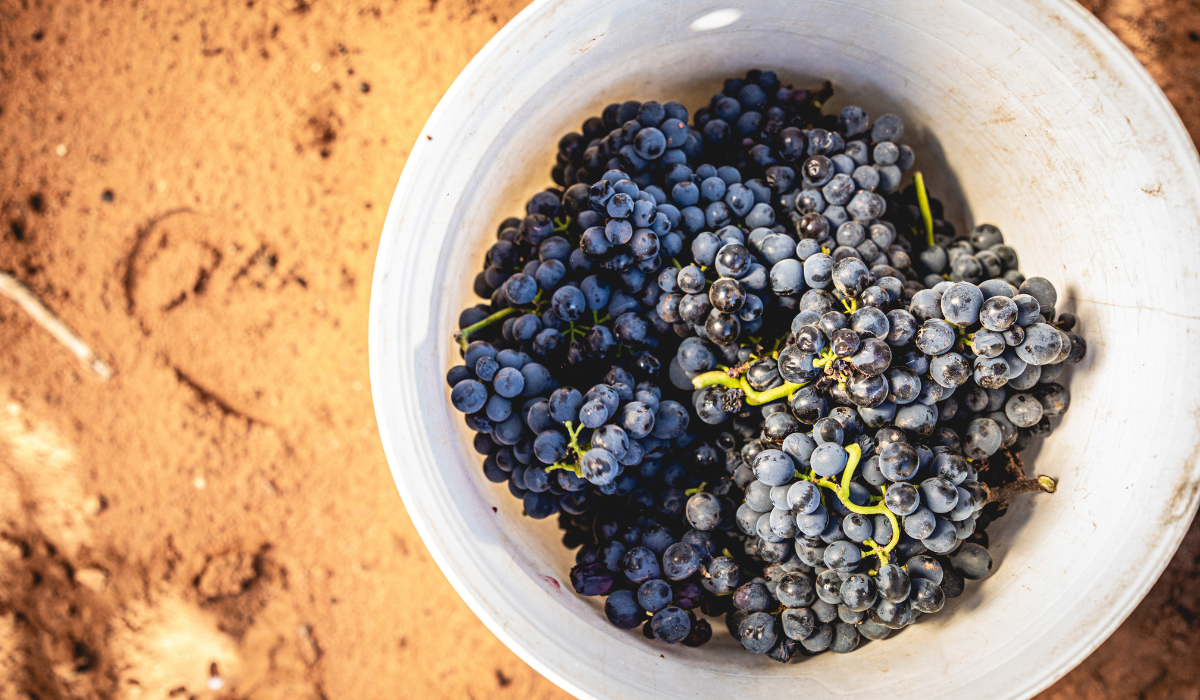Inspired by his time in Priorat in Spain, Chalmers' winemaker, Bart van Olphen, fancied trying his hand at the carignan grape and, just as he had seen in Priorat, he wanted to plant it ‘bush vine’ style.
As the idea percolated through the team at Chalmers, it was clear that carignan was going to be hard to source, but bush vines? Well, that was worth pursuing.
And, so began a five-year journey of discovery and along the way a significant contribution to saving water – and the planet – was made in one of Australia’s hottest, driest and largest producing wine regions: Merbein in the Murray Darling.
Bush vine blocks at Chalmers' Merbein vineyard in the Murray Darling.
The key lay not with carignan, but with two Italian red grape varieties – inzolia and negroamaro – and with restricting water to the vines to almost a mere trickle: as little as 1.9 inches or 48mm during the growing season. The rest came from the sky.
Irrigated vineyards up around the Murray River usually require an extra 750mm of irrigated water at minimum to do their job right.
But Chalmers worked on the theory that just a little water every day would help the vines flourish and save water. And they were right.
The results, according to the Chalmers family, noted viticulturists and leaders in the alternative grape movement – they prefer the term “new wave Australian wines” – were beyond their highest hopes.
The trick, if that is the right term, was to find the best grape varieties for the job.
“We scoured our (grape) collection for varieties that had a history of growing at low elevation, in red sandy soils with hot temperatures and low rainfall, and also varieties that had in some form in the past been grown as bush vines,” explains Chalmers Wines director, Kim Chalmers.
“And, that’s where we came up with these two grape varieties.”
Inzolia, which originally hails from Sicily and Tuscany, and negroamaro from Puglia, may be “daggy” and not well-known says Kim, but on paper – and in the mouth when you taste them – they make a big impact.
Negroamaro grapes harvested from bush vines.
Can any warm/hot wine region in Australia reduce water usage significantly to vines and still produce a stunning, quality wine?
Yes and no.
The choice of variety is important: high acidity, late ripening, thick skins and, importantly, drought tolerant which is usually the preserve of very vigorous grape varieties with big berries.
And importantly, drought tolerant rootstock is required with a deep tap root – the latter in order for the root systems to go in search for water.
But, adds Kim Chalmers, working with bush vines is both expensive and labour intensive.
“It’s not a cure all,” she warns.
“However, we all can collectively, and many, many people in the region are getting better at how we use water.
“And, one thing I think is really important, is changing some of the varieties we grow.”
Sign up to view these tasting notes and ratings
By becoming a member of Wine Companion, you'll have access to the largest database of wines in Australia.





